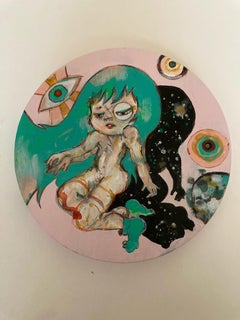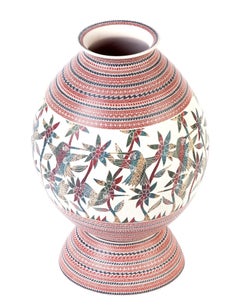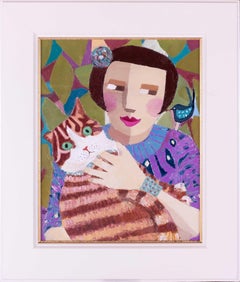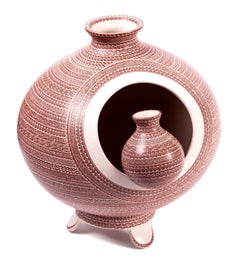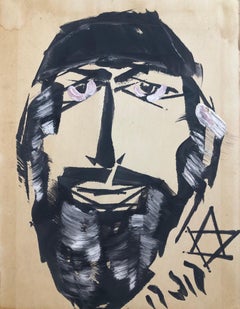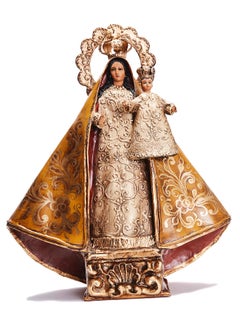Folk Art Art
21st Century and Contemporary Folk Art Art
Canvas, Dye, Acrylic, Pencil
2010s Folk Art Art
Ceramic, Clay
20th Century Folk Art Art
Canvas, Oil
2010s Folk Art Art
Ceramic, Clay
20th Century Folk Art Art
Gouache
2010s Folk Art Art
Cardboard
20th Century Folk Art Art
Canvas, Oil
Mid-20th Century Folk Art Art
Oil, Board
20th Century Folk Art Art
Archival Pigment
Early 20th Century Folk Art Art
Canvas, Oil
Artist Comments
Artist Sharon Sieben presents a woman assuming a confident stance and comfortability with the status quo. "It is a good thing to take an occasional time out to ...
21st Century and Contemporary Folk Art Art
Acrylic
2010s Folk Art Art
Clay, Stoneware, Glaze, Underglaze
1970s Folk Art Art
Lithograph
2010s Folk Art Art
Cotton Canvas, Mixed Media, Acrylic, Stretcher Bars
2010s Folk Art Art
Canvas, Paper, Pastel
2010s Folk Art Art
Canvas, Pastel
20th Century Folk Art Art
Gouache
1960s Folk Art Art
Oil, Board
1940s Folk Art Art
Metal
1960s Folk Art Art
Paper, Pencil
2010s Folk Art Art
Paper, Acrylic
20th Century Folk Art Art
Canvas, Oil
Mid-20th Century Folk Art Art
Cotton
1980s Folk Art Art
Color, Paper, Etching
21st Century and Contemporary Folk Art Art
Metal
Mid-20th Century Folk Art Art
Watercolor
2010s Folk Art Art
Mixed Media
1970s Folk Art Art
Screen
Late 20th Century Folk Art Art
Watercolor, Acrylic, Printer's Ink, Paper
21st Century and Contemporary Folk Art Art
Canvas, Oil
1970s Folk Art Art
Screen
1980s Folk Art Art
Paper, Gouache
Early 20th Century Folk Art Art
Ink, Pigment, Paper
20th Century Folk Art Art
Canvas, Oil
20th Century Folk Art Art
Canvas, Oil
1980s Folk Art Art
Screen
Artist Comments
Artist Jodi Dann displays a lemon tree with branches cascading heavily with plump fruit. They dangle from the thin twigs, inviting anyone who passes by to take one. "How can I resist the temptation to paint one of the most beautiful colored fruit?" asks Jodi.
About the Artist
In 1999, Jodi Dann seized the opportunity to become a full-time painter. Today, her paintings read like hazy memories of imagined faraway places. The compositions are abstract, but possess strong architectural elements, recalling bridges, arches, and doorways. Each piece retains an overall sense of place without prescribing a location, allowing the viewer to form an individualized connection with the work. Jodi paints from her cozy studio on her property in Oregon while listening to a variety of music on Pandora. She doesn’t feel the need to strive for perfection in her work. “Life isn’t perfect,†says Jodi. “Why force a painting to be?â€
Words that describe this painting: lemons, fruit, leaves, citrus, fruit tree, branches, plant, nature, acrylicpaint, primitive, kitchenart, nature, primitive, acrylic painting, beige
Harvest Time...
21st Century and Contemporary Folk Art Art
Acrylic
1980s Folk Art Art
Paper, Gouache
1980s Folk Art Art
Paper, Gouache
20th Century Folk Art Art
Watercolor, Gouache
1970s Folk Art Art
Etching
20th Century Folk Art Art
Lithograph
1960s Folk Art Art
Board, Gouache
2010s Folk Art Art
Oil, Canvas
20th Century Folk Art Art
Lithograph
20th Century Folk Art Art
Canvas, Oil
1990s Folk Art Art
Photographic Paper, Polaroid, Color, C Print, Archival Paper
1980s Folk Art Art
Paper, Gouache
1960s Folk Art Art
Canvas, Oil
1990s Folk Art Art
Screen
1980s Folk Art Art
Paper, Gouache
1950s Folk Art Art
Oil, Canvas
1950s Folk Art Art
Watercolor, Ink
20th Century Folk Art Art
Canvas, Oil
2010s Folk Art Art
Canvas, Acrylic
20th Century Folk Art Art
Lithograph
Artist Comments
Artist Jaime Ellsworth delights in the simple lives and observations of animals at rest, play, or exploration of new experiences....
21st Century and Contemporary Folk Art Art
Acrylic
Early 2000s Folk Art Art
Metal
